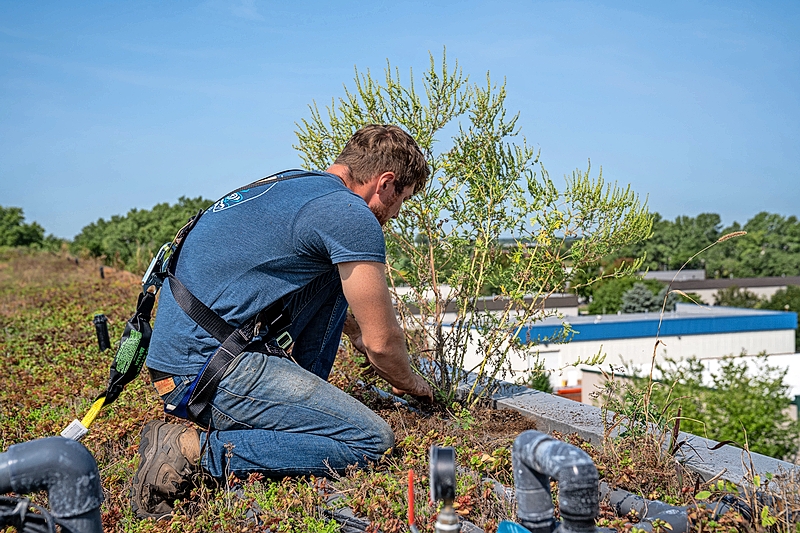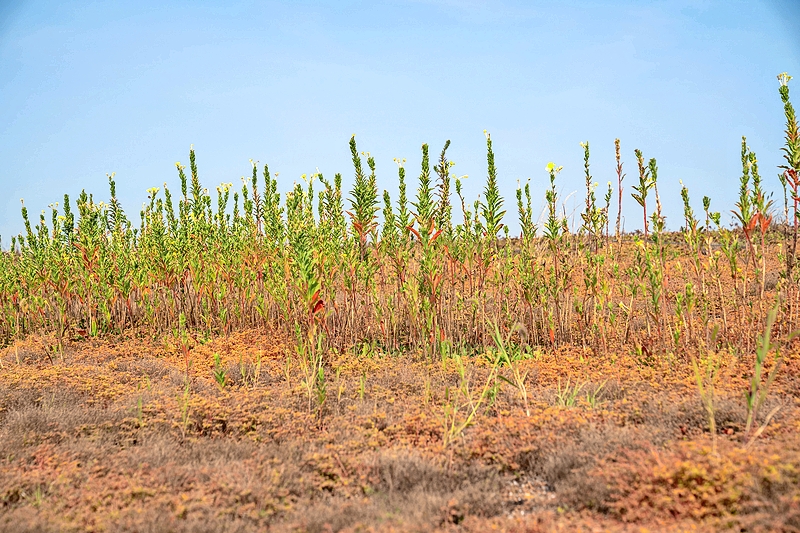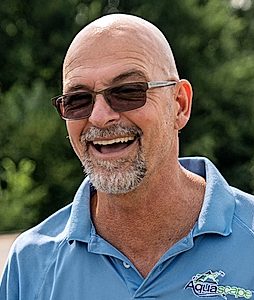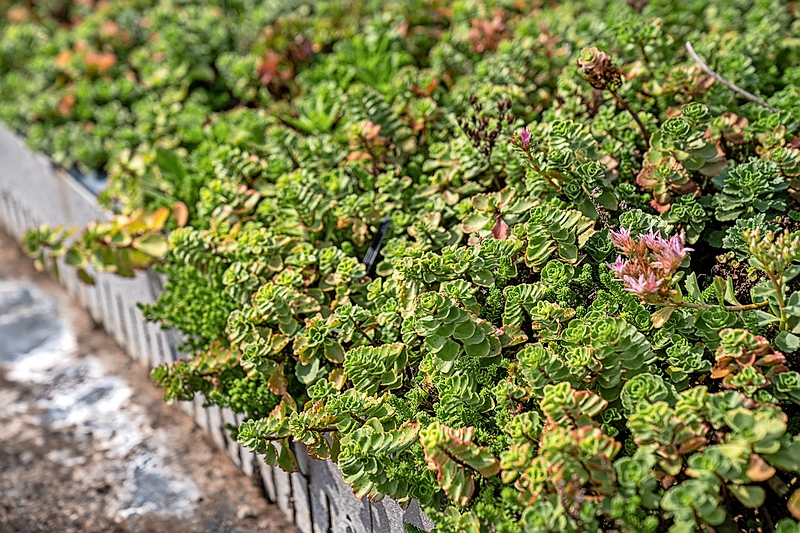Roots on the Roof
By Mark Loehrke
Appears in the January 2023 issue.
An expansive green roof project plants ideas of sustainability

Once the province of urban high-rise dwellers looking to bring a little bit of Mother Nature to their concrete surroundings, the humble rooftop garden has evolved into one of sustainable architecture’s favorite calling cards—the green roof. In response to the growing climate crisis, many governments and private enterprises all over the world have been installing supersized versions of the old rooftop garden on their new or existing buildings, hoping to do their part to increase green space, encourage biodiversity, manage stormwater runoff, and maybe even save some money on utilities.

Few companies can claim a more impressive dedication to the green-roof movement than water feature designer/retailer Aquascape, whose LEED-certified 256,000-square-foot headquarters in St. Charles (known as Aqualand) boasts the largest sloping green roof in North America, among its many eco-friendly features.

Originally created and planted in 2006, the 3.25-acre roof recently underwent a massive renovation to switch over to vegetation that could better thrive in northern Illinois. “We initially designed the roof out of native Illinois prairie but quickly realized that the ecology of the roof wasn’t working,” explains Ed Beaulieu, vice president of field research and contractor development at Aquascape. He worked on both the original concept and the 2022 redesign. “The soil on the roof had nutrient depletion, meaning the soil was six inches deep, and typical Illinois plants need deeper soil. We then figured out that we needed to change the plants to low-maintenance sedums, which are more resilient in extreme climate conditions, including high winds, high heat, and cold winters.”
After 18 months of design and installation, the renovated green roof was completed in early June and spent the summer growing out. Just like the original, Beaulieu says, the new roof continues to act as a “little sponge” to manage stormwater runoff at Aqualand, as water flows off the sloped roof into a large retention pond where it is stored and used as needed to top off the adjacent 250,000-gallon custom koi pond. The green roof is also a habitat for pollinators, while creating a cost-effective insulating barrier that helps to keep building temperatures more stable, resulting in a lower gas bill.

While green roofs currently make sense mostly for commercial projects (since most homes can’t sustain the weight of a planted roof), Beaulieu believes their popularity will continue to grow on the corporate and governmental front, particularly as organizations look to find new ways to demonstrate their commitment to sound environmental, social, and governance (ESG) principles. He’s proud that Aquascape is at the vanguard of the movement. “With our rainwater-harvesting systems, green roof, ecosystem ponds, and even permeable pavement, we consider ourselves to be influencers in the green industry,” he says. “When installing these, our goal was to be a showcase for ecosystem sustainability and to help educate customers and people around the world who visit our facility.”
Photos courtesy of Ed Beaulieu and Trevor Aguiniga/Aquascape


